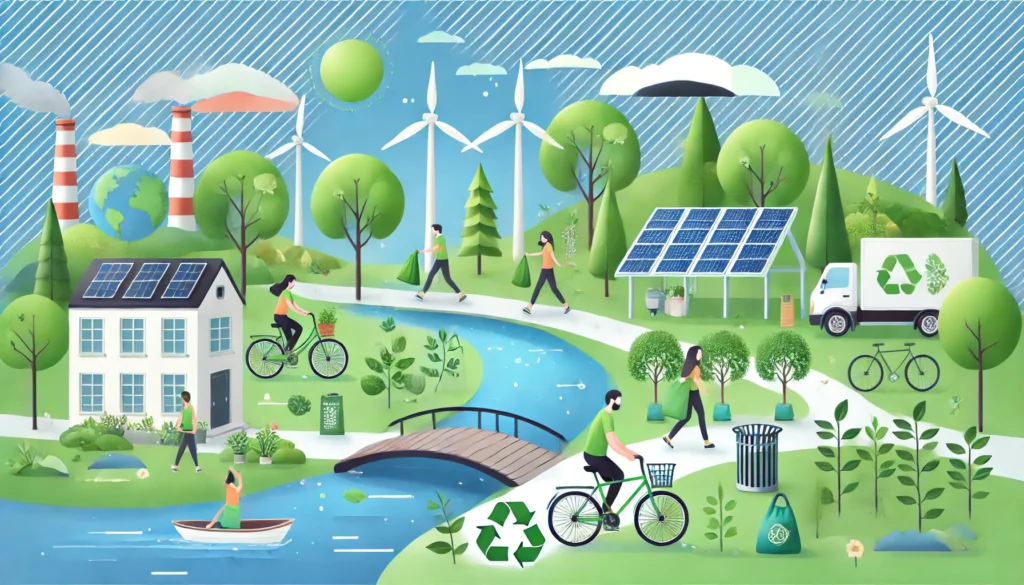In today’s world, self-sufficiency is becoming increasingly important, not only for individuals but also for communities. Cooperative housing societies can greatly benefit from becoming self-sufficient, reducing dependency on external resources while promoting sustainability and cost-efficiency. In this blog post, we will explore 10 practical and achievable ways to make your cooperative housing society self-sufficient, ensuring a healthier environment, economic savings, and a more empowered community.
1. Implement Solar Energy Solutions
One of the most impactful ways to make your housing society self-sufficient is by investing in solar energy. Installing solar panels on rooftops or common areas can significantly reduce electricity bills while minimizing the environmental footprint. Solar energy is a renewable resource, and it provides an excellent return on investment over time.
Example:
Many housing societies in cities like Pune and Bangalore have successfully installed solar panels, reducing their monthly electricity costs by up to 50%. The initial investment can be recovered within a few years, after which the energy generated is essentially free.
2. Rainwater Harvesting
Rainwater harvesting is a sustainable practice that involves collecting and storing rainwater for later use. By setting up a rainwater harvesting system, housing societies can become less dependent on municipal water supply and reduce water scarcity during dry seasons.
Example:
A housing society in Chennai successfully implemented a rainwater harvesting system, which allowed them to store water during the monsoon season and use it throughout the year for gardening, cleaning, and even drinking water after proper filtration.
3. Waste Segregation and Composting
Proper waste segregation is key to a self-sufficient housing society. Separating organic waste, recyclables, and non-recyclables helps manage waste more effectively. Organic waste can be composted to create nutrient-rich soil, which can then be used in gardens or community parks.
Example:
A cooperative housing society in Mumbai introduced compost bins for each household, converting food and garden waste into compost. This compost was later used for landscaping, reducing the need for chemical fertilizers and cutting costs.
4. Energy-Efficient Appliances and Lighting
Encouraging the use of energy-efficient appliances and LED lighting within the housing society can significantly reduce energy consumption. Common areas like corridors, lobbies, and gardens can be equipped with motion-sensor lights, ensuring energy is used only when needed.
Example:
A society in Delhi replaced all traditional bulbs with LED lights and installed energy-efficient fans and appliances in common areas. This reduced their overall electricity consumption by 30%, helping them save on utility bills.
5. Water Recycling
Recycling greywater (from washing machines, sinks, and showers) can further contribute to water conservation in housing societies. This treated water can be used for non-drinking purposes such as gardening, toilet flushing, and cleaning.
Example:
In a housing complex in Bengaluru, a water recycling plant was installed to treat greywater. The recycled water is now used for maintaining lawns and flushing toilets, reducing water consumption by 40%.
6. Community Farming and Gardening
Introducing community gardens or farming spaces within your housing society can provide fresh, organic produce for residents. It also promotes sustainable living and fosters a sense of community among residents.
Example:
A society in Kerala created a rooftop garden where residents grow vegetables and herbs. This not only provides fresh produce but also reduces the carbon footprint associated with transporting food from farms to homes.
7. Electric Vehicle (EV) Charging Stations
As electric vehicles become more popular, installing EV charging stations in your housing society can encourage residents to switch to electric vehicles, reducing carbon emissions and promoting green transportation.
Example:
A housing society in Hyderabad installed multiple EV charging points, encouraging residents to invest in electric vehicles. This move not only made the society more self-sufficient but also helped promote an eco-friendly lifestyle.
8. Install a Biogas Plant
A biogas plant can convert organic waste into energy, which can be used to power kitchens or common areas. This reduces the need for external energy sources and promotes waste management.
Example:
In Pune, a housing society set up a small biogas plant that converts kitchen waste into biogas. The biogas is then used to cook in the society’s community kitchen, reducing the need for LPG cylinders.
9. Collaborate for Bulk Purchases
Housing societies can benefit from bulk purchasing of essential items like cleaning supplies, groceries, or maintenance materials. By pooling resources and buying in bulk, societies can reduce costs and ensure a steady supply of necessary goods.
Example:
A cooperative society in Kolkata partnered with local suppliers to bulk-buy groceries and cleaning products for the entire community. This allowed them to negotiate discounts, reducing costs for all residents.
10. Create a Shared Economy within the Society
Encourage a shared economy where residents can share resources like tools, appliances, or even vehicles. This reduces the need for each household to purchase its own resources, promoting a sense of community and reducing overall consumption.
Example:
A housing society in Noida set up a common resource center where residents could borrow tools like drills, ladders, and lawnmowers. This initiative not only saved money but also reduced waste by minimizing duplicate purchases.
Conclusion
Becoming a self-sufficient cooperative housing society is not just about saving money—it’s about building a sustainable, environmentally friendly, and thriving community. By implementing the 10 strategies mentioned above, societies can reduce their reliance on external resources, lower costs, and create a healthier, greener environment for residents. From installing solar panels to setting up community gardens, every small step contributes to a larger goal of sustainability.
Discover more from Green Ecosystem - Renewable Energy, Agriculture, and Environmental Sustainability
Subscribe to get the latest posts sent to your email.


